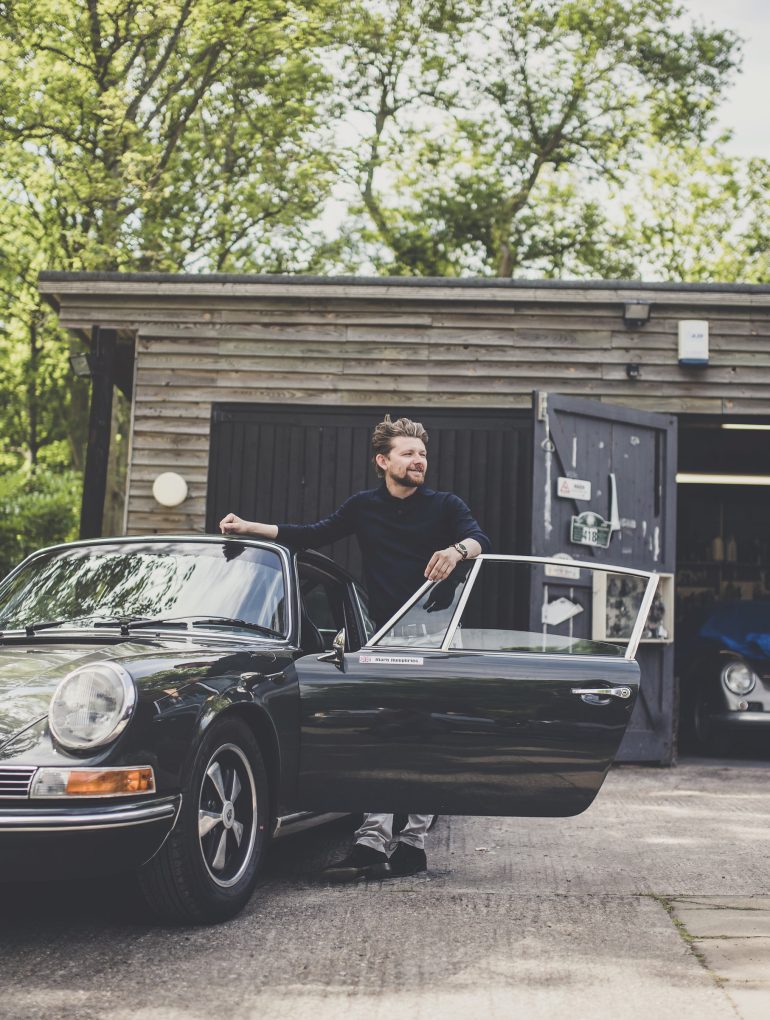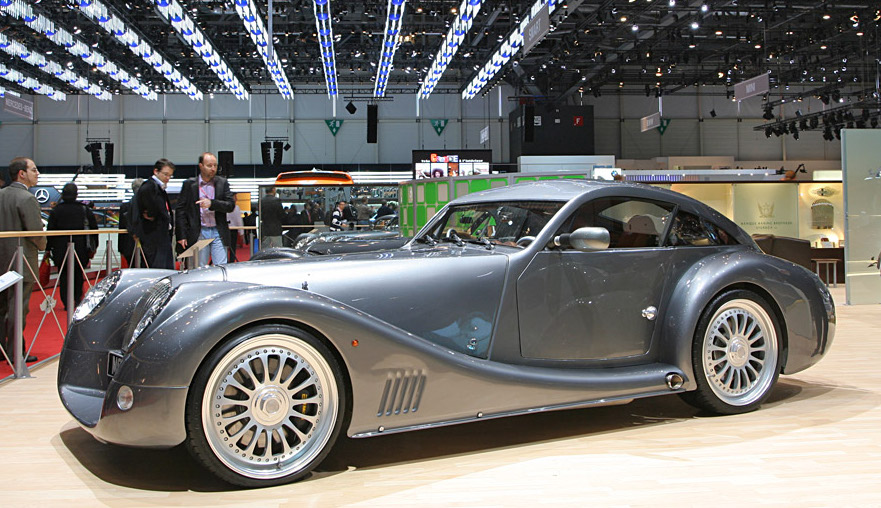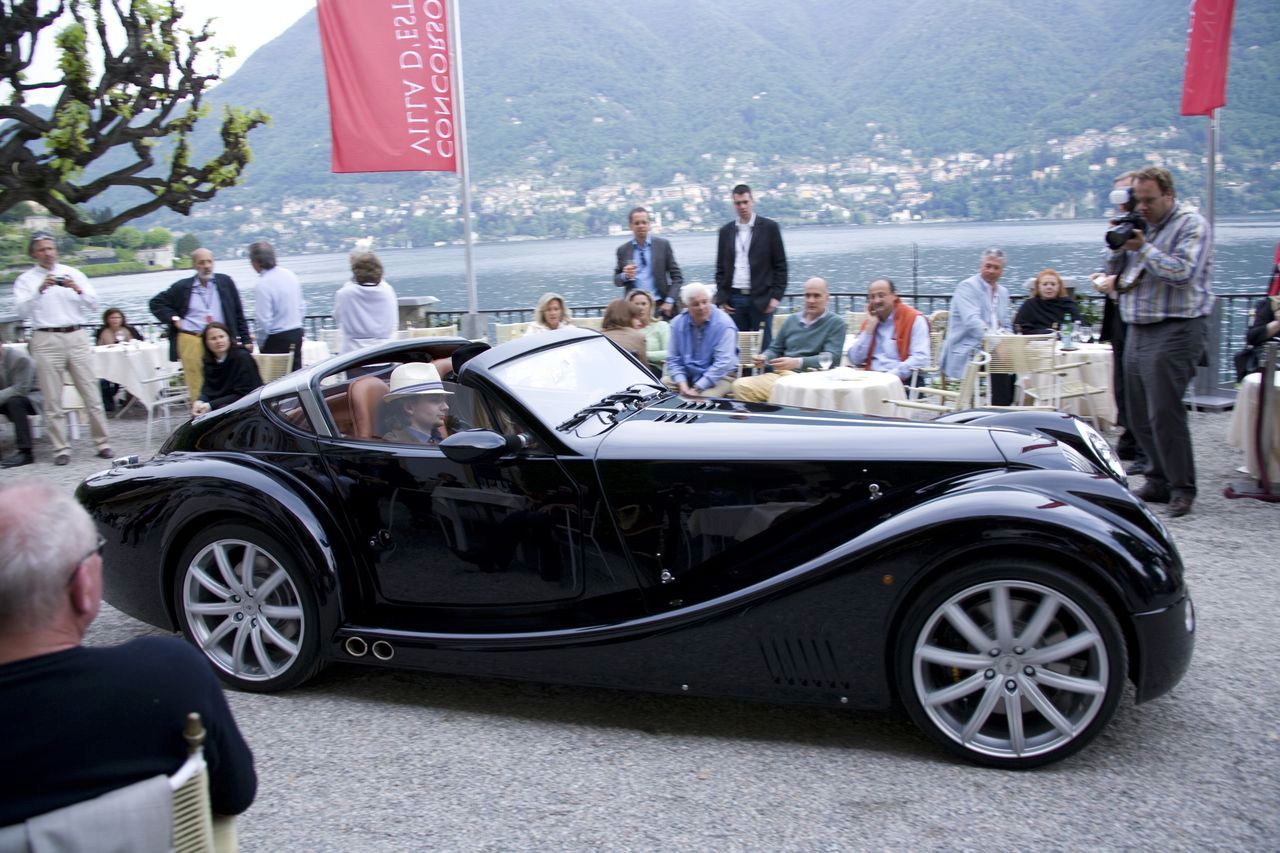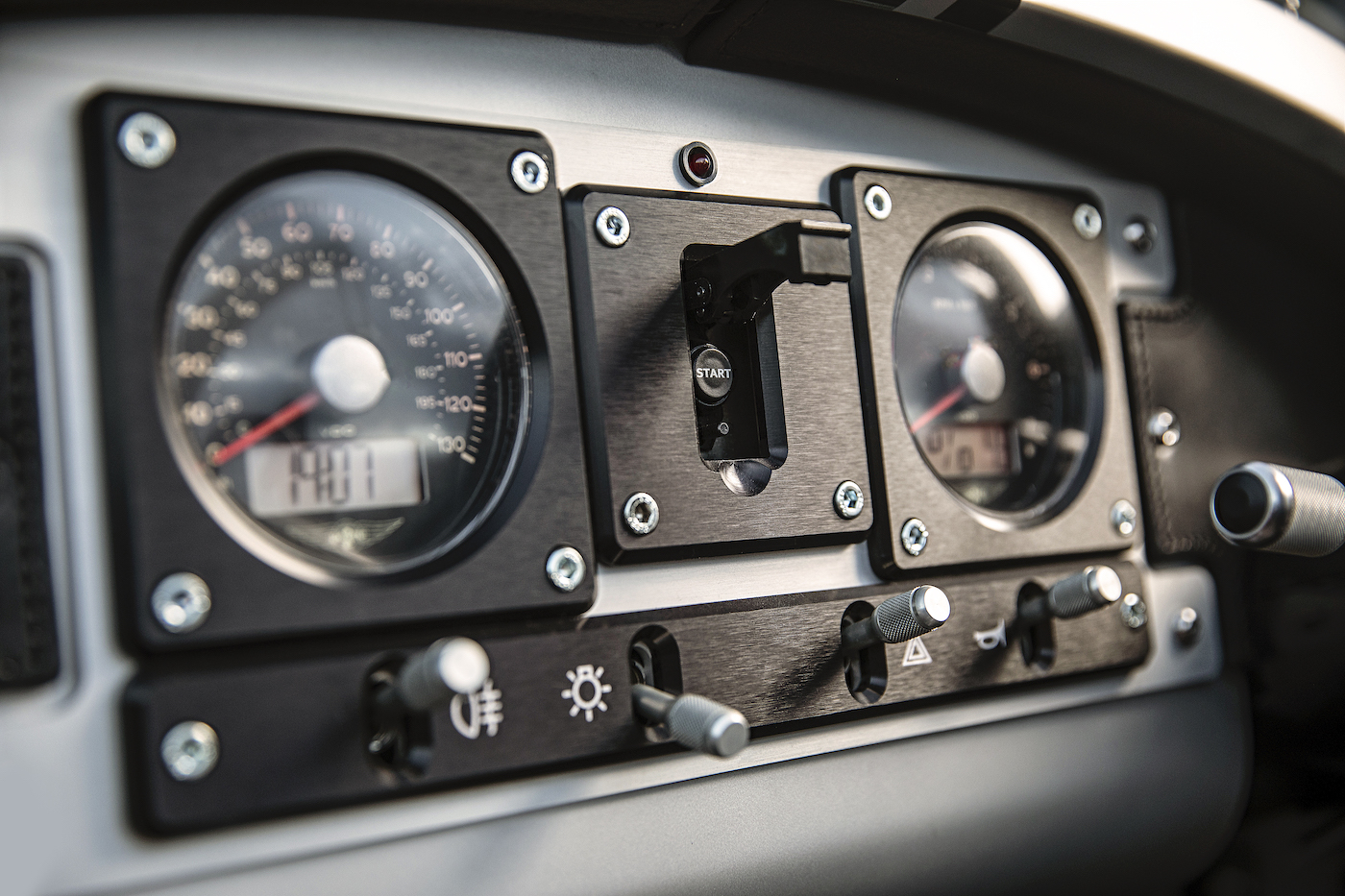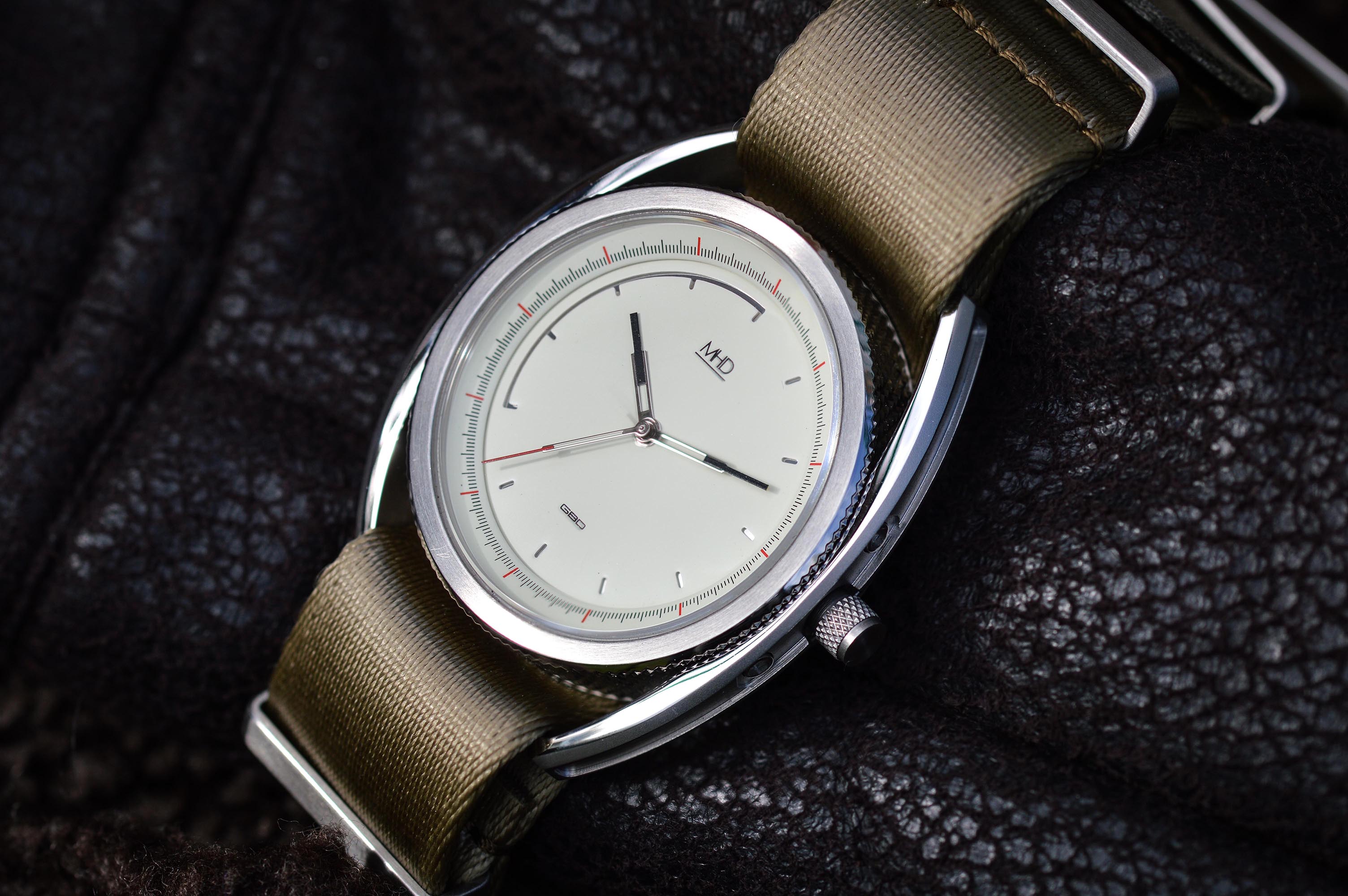From Morgan Motor to MHD Watches and Beyond
When Matthew Humpries was just 21 years old, he was appointed head of Morgan Motor Company’s design department. This is a fact that he should be very proud of, but something I believe he doesn’t consider his crowning achievement. Since then he has gone on to do equally impressive things. Before we get to those things, let’s dive into his time at Morgan. The designer landed that job while studying at Coventry University in the UK.
He told me he’d always been interested in cars, especially from a design standpoint. His father was an architect, and being around that kind influence as well as a motoring one (Matt’s father is a bit of a gearhead and car collector), he was set on a path towards a career in automotive design at an early age.
Early Beginnings
In his second year at Coventry, he sent out his portfolio to numerous automakers. The fact that his work caught the eye of Charles Morgan is no surprise. Matt focused on British cars in his studies and his portfolio reflected this, specifically the focus was on the traditional British sports car design—long hood, short rear.
Morgan hadn’t had an in-house designer before. The company had worked with designers in the past with only marginal success, but had focused less on design and more on the engineering of the cars.
“Up to that point, everything had just kind of been done in an engineering fashion,” Matt told me over the phone.
Charles had Matt come into the factory and get to know it and the people there and then asked him to design a car for a friend who wanted a coupe based on the Aero 8 chassis. Matt sketched some ideas up, went back to the university, returned to Morgan with a clay model of his design, and then presented it to the client.
“He said, oh great, love the design. I’ll have it,” Matt said “I thought he was talking about the clay model, so I went back off to university and my studies. Then I got a call one day from a chap in the metal shop [at Morgan], and he said, ‘Matt, come down I have something I want your opinion on.’ So, I went down the Morgan factory and they had my clay model in the corner of a workshop and an Aero chassis. They were trying to scale up the clay model over the chassis.”
At that point, Matt knew they were going to actually build the car he designed. From then on, Matt came down to the factory to help turn his clay model into a reality. Matt said it was a traditional process, one that involved him designing parts of the cars and then the craftsmen at morgan making those parts from scratch. Matt said they worked like that for the better part of seven months.
When the car was completed—the Morgan AeroMax Concept—Matt said he found himself at 21 years old standing next to the first new car Morgan had created in decades at the Geneva Motor Show surrounded by press.
“It caused quite a stir,” Matt said. “Basically, from that point on I was working more at the factory while I finished my studies and then Charles asked me to come to the factory and become their designer.”
Head of Design at Morgan
Matt said once he was the head of design at Morgan he essentially had to start from scratch because Morgan had never really had an in-house designer or design studio. He had to create the whole process and team and make everything work with the factory that was already well established.
“It started with just myself and I got another designer on board and then we got someone on who was responsible for photography and web design,” he said. “It ended up by the time I left about 10 years later, we’d integrated design into the factory.”
Matt and his team did everything from designing the cars to marketing them and making sure the brand was being presented and represented properly—anything that was concerned with the image or aesthetic of the company.
While there, Matt and his team were responsible for some of the most influential Morgan models in recent history from the AeroMax and the Aero Supersports to the Morgan 3-Wheeler. Matt and his team also designed one of the company’s most ambitious projects to date, the Morgan LifeCar. The LifeCar, for those unfamiliar, was a concept car that utilized hydrogen fuel cell technology.
Matt said it wasn’t an easy thing to do. “There was definitely pushback,” he said. “I mean, if you can imagine a 21-year-old with long hair turning up and saying, no you can’t just make it look like that because that’s how it needs to work.”
He said he had to work with the engineering team to get the guys there to understand that everything needs to look a certain way. “It needs to have an aesthetic and a reason for what it looks like,” he said. “It’s not just that Bill has bashed a bit of metal so that’s what that looks like. In the modern world, it isn’t that easy with any product.”
Matt said one of the things that allow Morgan to stand out is the craftsmen who work there. Other automakers aren’t as flexible and creative as the folks that work at Morgan. Matt said it’s amazing to see the guys in the woodshop forming things literally with their hands.
He pointed to the seats in the LifeCar as an example. They were made of laminated wood pieces. He said they were part of what Morgan called “Lightweight Luxury” and that they not only served the vital purpose of making a lightweight seat but they looked beautiful as well. That laminated wood method was used in the past, but now it was being used as a purposeful design element with aesthetic appeal. Its use has become ingrained in the company’s designs. It’s featured in the company’s current models.
From Autos to Watches
While Matt was still at Morgan he was also pursuing other passions. At one point he was asked to do some watch design for the Lonville Watch Company. At the same time, he was designing the instrument cluster of the Morgan 3-Wheeler.
Matt said the instrument cluster in the 3-Wheeler was actually inspired by some of the work he was doing on watches at the time.
“It’s almost designed like two watches for the dash,” Matt said. “There’s almost two straps to the sides of it.”
Matt’s work with Lonville continued and he really got into watches more and more. “Going through the design process got me more intrigued, “ he said. “It became a passion and then it became sort of an obsession and then a hobby. I started taking watches apart and customizing them and understanding how the movement is put together. As soon as you start getting into it, it becomes a real obsession.”
Matt said there’s something interesting with people who have a mechanical interest no matter what it is—cars, planes, motorcycles, watches. They all get drawn in by how things work. “You know, I was thinking mechanical watches are like a gearbox in a vehicle, taking the power and slowing it down so it’s released over a longer period of time.” Matt is a perfect example of this kind of curiosity.
Designing a Better Machine
Today, Matt does a bit of both car design and watch design. He owns his own design consultancy business, he’s the head of design at Alcraft Motor Company (Britain’s electric car company), still involved with Lonville, and runs MHD Watches. MHD Watches is a business he runs with his wife.
Matt said there’s definitely automotive influence in the watches he makes at MHD Watches. “Any designer takes a history along with them. A lot of what you learn in car design goes into watch design.”
Matt talked about the need in automotive design to keep tension in every line of the car so that it looks as though the car is already moving even when it’s standing still. He said that every single line should have that feeling, that tension in it.
“What we’re trying to achieve is having an engineered aesthetic,” Matt said. “So it looks purposeful while having a very clean, technical look.”
Matt said just like with the work he did at Morgan, he’s trying to make design signatures in his watches. He pointed to what he called the “In the Red Zone” feature on his watches. If you look at MHD Watches, in the dial, there’s an additional line from the number eight to number 12. That line will always be in MHD Watches products in some capacity. Matt said that design feature is inspired by his father’s 2.2-liter Porsche 911.
Matt said that his designs will always keep evolving. He struck me as someone who can’t help but create. When I asked him about his current automotive projects, he said he’s still working on the development of its shooting break Alcraft GT car (shown above), and that he has a couple of other projects with other companies that he’s working on but he didn’t feel comfortable talking about them at this time. When the time comes for Matt to reveal some of his other projects, I’ll be giving him another call. Until then, his focus is on MHD watches, and making the watches as best he can.


